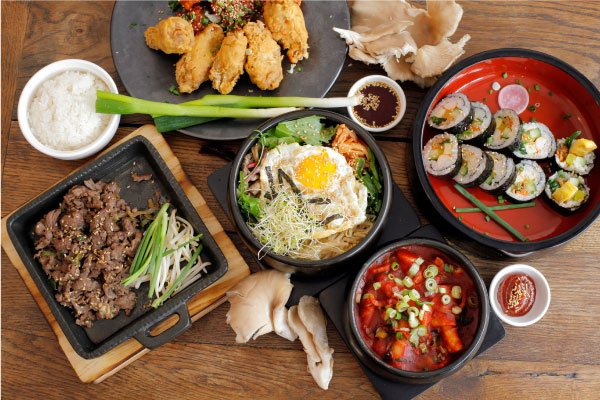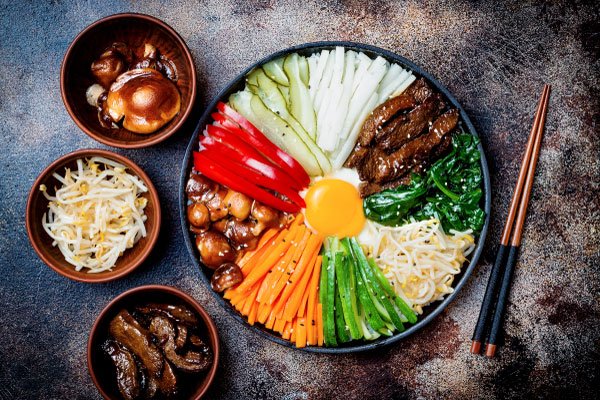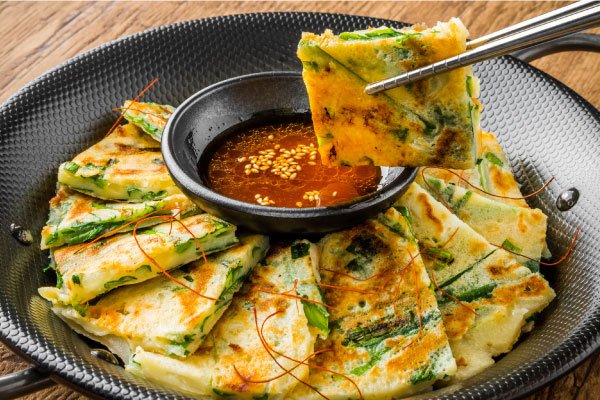
The hardest part when you’re in Korea is having to choose what to eat and whether you can stomach all the wondrous display of food in so little time. Intensely flavoured, spicy and pungent, many described them as hearty and nutritious delights that can be enjoyed at any time of the day.
Korean food is some of the healthiest food around, placing emphasis on a balance of vegetables and meats cooked with minimal oil. Vegetables are mostly blanched and seasoned with sesame oil or fermented. Accompanying the meal is usually a soup or hearty stew packed with meat and vegetables. Side dishes may vary from two to a dozen and usually complement the main dish.
If you are feeling a little lost at where to start, then let’s dig into the most popular dishes found.
Bibimbap

Bibim means “mixed” and bap means “cooked rice”. So, before you dig in, you are supposed to give everything in the bowl a good mix. Bibimbap consists of a bowl of rice, sauteed and seasoned vegetables and topped with a sunny side up. The protein can be made up of raw or stir-fried beef, seafood, or even fried tofu for a vegetarian version. The whole dish is then mixed with a bit of hot pepper paste and sesame oil before eating.
Tteokbokki
A traditional street food, tteokbokki is stir-fried rice cake that’s sweet, spicy and chewy. Consisting of garaetteok, onions and fish cake called eomuk, they are then boiled in a spicy gochujang sauce till the sauce thickens. Tteokbokki can be found everywhere and a comfort food to many Koreans.
Bulgogi
Bulgogi means “fire meat” and is often made with thinly sliced beef that’s marinated in a sweet and savoury sauce. It is then grilled or stir-fried with vegetables. The caramelized beef with crunchy sweet vegetables makes a delicious meal which is popular with children.
Samgyetang
There’s a Korean believe that says “fight heat with heat” which means on those scorching summer days, you replenish your energy with a piping hot bowl of samgyetang or Korean ginseng soup. This nourishing soup contains a spring chicken stuffed with chestnuts, dried jujubes, ginseng and sweet glutinous rice and gingko nuts. It is then boiled till the meat is fall-off-the-bone tender and the broth thickens with a fragrant taste.
Kimbap
A perfect meal on-the-go, it is a common sight in picnic baskets. Kimbap means seaweed rice and many times compared to the Japanese version of sushi. However, kimbap and sushi is totally different. Made with sushi rice, meat, spinach, pickled radish, egg or seafood, it is then rolled, brushed with sesame oil and sprinkled with roasted sesame seeds. It is then cut to small bite sizes and served with kimchi.
Jajangmyeon
A noodle with black bean sauce, it is a popular Korean Chinese dish. As seen in many dramas, it is also a popular dish that’s delivered, just like pizzas. Jajangmyeon consists of thick handmade wheat noodles topped with raw cucumber slices and a thick black bean sauce that’s loaded with vegetables and meat.
Korean fried chicken
Sounds like a fast food meal, but Korean fried chicken is a must-try when you are in Korea. Juicy on the inside, crispy on the outside, it is coated with a sweet and spicy sauce. For those who can’t take the heat, you can opt for the soy garlic or original version which are equally addictive.
Haemul pajeon

Haemul pajeon is a popular Korean savoury pancake that’s made with scallions and seafood. Crunchy and filling, it is a traditional companion for Korean rice wine and is perfect on rainy days.
Patbingsu
A meal is not complete without dessert so remember to reserve some space for patbingsu which is shaved ice with red beans in Korean. Made with ice shavings and sweet toppings, it is one of the most popular desserts in Korea. Toppings varies from fruits to bite-sized mochis called injeolmi that are chewy and sweet. Remember to have a taste of this when you are in Korea.
So, what are your favourite Korean dishes? Have you tried any of them before? Tell us in the comment section which are your favourites.
